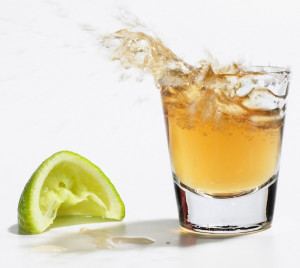
When the question was asked “what is your favourite tequila” the answers poured out… [from 2016].
Claudia Lavista , Herradura ♦ Jon Juan, Los Osuna ♦ Alastair Porteous, Los Abuleos ♦ Gerard Koldyk, before dinner sipping, Tres Generaciones Añejo Qn, for mixing, Hornitos, for after dinner, Don Julio Reposado ♦ Liz and John Bannister, El Jimador reposado ♦ Rob Lamonica, if someone is buying Don Julio 1942, when I’m out and about it’s Cabrito, and if that’s not available then Jimador ♦ Daniel Shiplacoff, Fuenteseca Reposado ♦ David Robb, any ♦ Michael Hall, for mixing El Compadre [it’s cheap and 100% agave], for sipping Los Osuna Añejo or Don Julio Añejo ♦ Ken Woods, El Jimador Reposado for everything, even an after breakfast drink ♦ Win Stephens, Los Osuna, followed by Fortaleza ♦ Juan Pablo Sánchez King, Los Osuna Añejo ♦ Tatiana Genoud, Herradura Añejo for mixing or for savouring ♦ Kevin Lysaght, Los Osuna ♦ Jennifer Woodman, all Los Osuna products – for shots a chilled El Compadre, for after dinner Los Osuna vanilla ♦ Simon Lynds, Herradura Reposado for a pre-dinner “livener” ♦ David Zavala, Los Osuna Añejo ♦ Barry Mort, El Compadre ♦ Gustavo Gama Olmos, Jimador ♦ Mike Veselik, Cazadores Reposado, chilled ♦ Lori Davidson, Cazadores for it’s affordability, for the good stuff, Don Julio 70, Jose Cuervo 1800, but truly, our local Las Osuna is a fine, fine Reposado ♦ Gerardo Zatarain Saucedo, Don Julio ♦ Alfredo Herrera, Herradura Reposado, Centenario ♦ Ana Paola Osuna, Don Julio Reposado or Cuervo Especial chilled ♦ Angelina Escutia, Herradura Reposado ♦ Alfredo Gómez Rubio, Tres Generacions Añejo ♦ Steve Russell, any white, the younger the better! ♦ Roy Mcilveen, Don Julio Añejo ♦

[A tequila snap shot. It’s possible the Aztecs in 1000 B.C. had their own form of tequila – a fermented drink known as pulque which used the sap of the native plant, agave. [agave, agave tequilana, is not related to cacti or aloe, it’s a succulent, a distant relative to the lily.] When the Spaniards invaded Mexico, around 1500s, they began improvising with mud and agave, essentially creating what we know today as mescal. Those thirsty Spaniards had run out of their beloved brandy. The Marquis of Altamira built the first large-scale distillery in today’s city of Tequila in the state of Jalisco in 1600s. Then came the Cuervo family followed by the Sauza family. It’s said that Don Cenobio Sauza was responsible for identifying blue agave as the best for producing tequila. In 1974, the Mexican government took legal ownership of the name tequila; tequila could only be called tequila if it was produced in Tequila, Jalisco. [true, there are some approved distilleries outside of Jalisco]. No other country in the world is allowed to use the word tequila much like the French established the legal right to brand Champagne. Most people prefer 100% agave, but there is also a mixto where sugar or corn syrup is added. The names: añejo means old and is aged for a minimum of 12 months; reposado means rest, matured in a casks/barrels for two months but no longer than 12 months; blanco or silver/plata means it’s unaged, never hits the casks and people claim it delivers the purest notes of agave. Remember that all tequilas are technically mescals, but not all mezcals are tequilas. Here’s how Steve Acres makes his margarita.]
